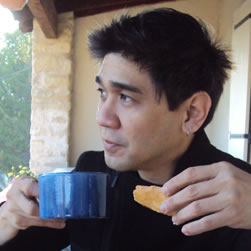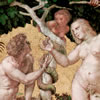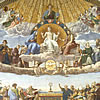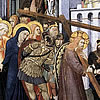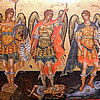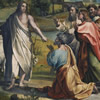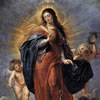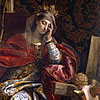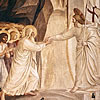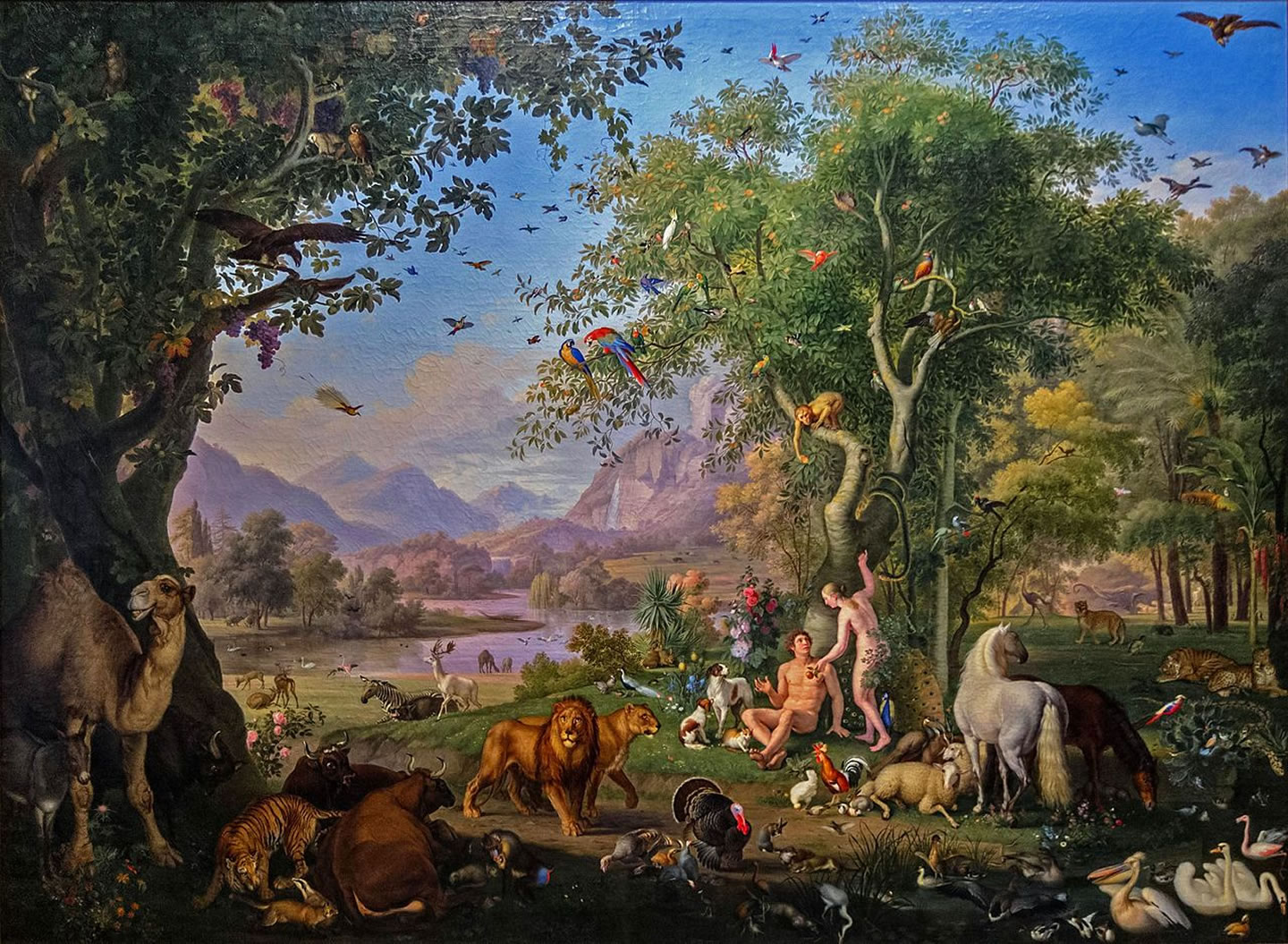

Adam and Eve in the Garden of Eden
This scene from Genesis, by Johann Wenzel Peter, captures paradise the way God intended. It shows how humans and animals lived together in harmony. Animals that are considered as prey live peacefully alongside with predators. They all live in the presence of humans without being afraid of them. On the lower left, we can even see a camel that seems to be smiling as it accompanies a donkey.
In the distance, we can see a river, which Genesis figuratively alludes to as the “source of life” for it breaks into four and waters the rest of the earth; without it, plants and animals would die.
We should see in this scene the wonderful creation of God. Everything is in order and in healthy relationships with one another – and that he gave all of these to us. God gave humans dominion over all of the creatures on earth, as well as the living plants that were nourished by the soil of the earth. Adam was given the job to till the soil, and take care of the animals. In a very practical sense, Adam was to be a “shepherd” to the animals, and a gardener to the plants. This is how God intended we should live our life – that is, under our care, the earth would flourish and last forever.
Often, in the flurry of our daily activities, we forget to pause and ponder on the beauty of the universe that God gave us. Sometimes, we even seem to gravitate on reading and watching the bad things that are reported on social media and on television – habitually forgetting to also see the good things that balance it out.
Some of us also regularly forget that we are stewards of creation – we were made to have dominion over it. It isn’t a dominion that abuses it but nourishes and cares for creation so it flourishes and lives forever. This is why our popes and bishops continue to nag us about caring for the environment. It isn’t just something nice to do; it is something we were given the responsibility to do! In our own way, we should do the little we can by conserving energy, reducing food wastage, and finding alternative sources of energy and transportation, and protecting forests.
Somewhere at the center of this composition are Adam and Eve, who it seems are just about to fall into temptation symbolized by a snake that lurks nearby. We should not miss the peacock beside them for this becomes important later.
When Adam and Eve committed original sin, they spurned God’s friendship and by pushing him away, all the graces that kept creation “perfect” were lost. Not that God sulks and takes back what he has given, but because graces are gifts that depend on the giver. Without God, the graces cannot remain and so all of creation becomes dysfunctional. Right away Adam and Eve are ashamed of their nakedness when they had been naked all along. Right away Adam is afraid of God even if God had not given him any reason to do so. Humans will have to toil for plants to grow. And later, at the time of Noah, animals will fear humankind.
Christ is our savior because he fixes all of these in a “new creation” that starts with him. He is the New Adam who brings back things to God’s original plan – not immediately, but slowly and patiently the way yeast makes bread rise over time. Christ’s birth is accompanied by the donkey Mary rode on, and the camels the Magi took to find him. He is the “Good Shepherd,” and the Resurrected Lord whom Mary Magdalen mistook for a gardener. He is the New Adam who doesn’t die the same way it was believed the flesh of peacocks never perishes. Christ is the fountain of life for without him we cannot live. We must see how Johann Wenzel Peter includes in his painting these figures that remind us of Jesus, the New Adam.
Christ has restored the beauty of creation, yes, but we, as stewards, we have to continue that work. Here are some practical ways to do this.
- Take a moment to admire something beautiful around you and thank God for it. It can be the smallest thing – the food you eat, the fragrant perfume your officemate is using, your friendly neighbor, that your mother-in-law smiled at you today.
- Spend some time to do spiritual reading as it balances the negative effects of the bad news you encounter during the day. Reading the lives of Saints and their writings are good. Watching documentaries of popes are good too.
- Do something to help the environment. Again start small such as reducing food waste. It might not solve everything, but it will slowly move you to the right disposition about caring for our planetary home. Take this interactive Climate Change Quiz where you can learn what you can do to help the earth. It is an eye-opener.


